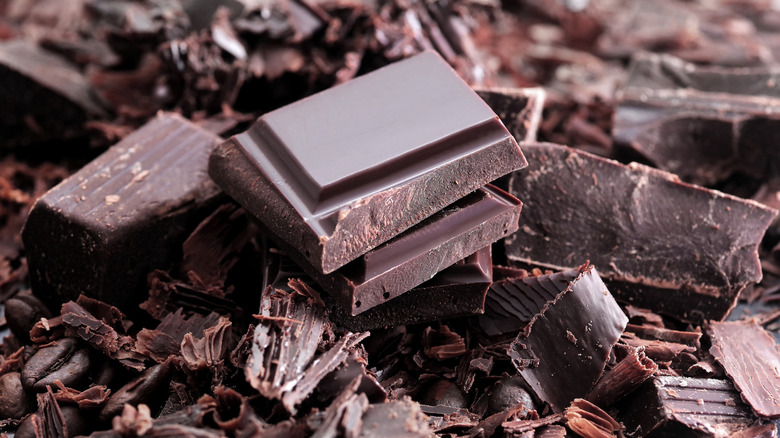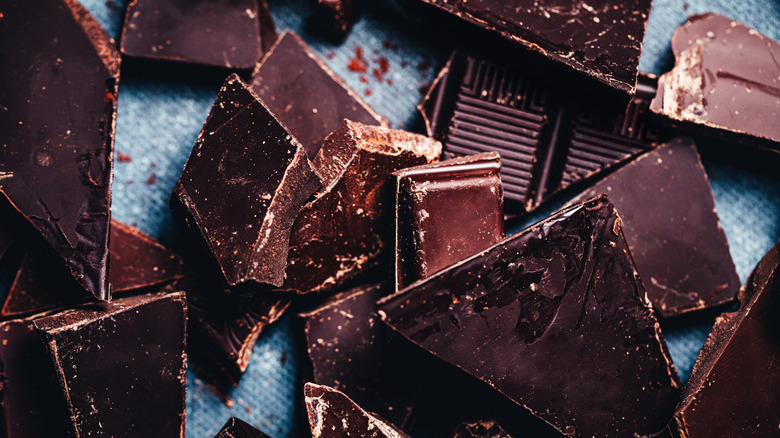The Cocoa Percentage That Qualifies As Dark Chocolate
Although modern consumers are used to chocolate being sweet and creamy, for most of its history, this treat has been dark and bitter. People in the Americas consumed it for thousands of years before Europeans landed on the shores of the continent, usually as a spiced drink boiled in water. European colonizers brought cacao beans back to their countries in the 16th century, but it wasn't until the 1700s that British and Dutch chocolatiers began adding sugar and milk to the beverage. It was also in this century that chocolate was first made in solid form, and sold as the irresistible candy bars that we now know and love.
But history has a way of coming back in full circles, and dark chocolate is on the rise again. So, what counts as dark chocolate? For a bar to hold this label, it must have at least 50 to 90% cocoa solids and cocoa butter. Sugar is usually the other main ingredient found in dark chocolate bars, while milk is never used. The higher the percentage of cocoa products, the more bitter the chocolate. Other ingredients commonly found in dark chocolate bars include nuts, dried fruit, and salt. Dark chocolate differs from the way hot chocolate was originally consumed, but it tends to be closer in taste than other types of chocolate, particularly sweeter types like milk and white chocolate.
What makes dark chocolate special?
Dark chocolate stands out from its counterparts precisely because it contains a higher percentage of actual cocoa products. Milk chocolate only has 10-50% cocoa solids and butter, and it also adds sugar and (of course) milk. White chocolate doesn't have cocoa solids at all, which is why some people argue that it's not even real chocolate. These percentages also translate into different textures, as dark chocolate is more solid and less bendy than its competitors.
But, how are these differences relevant to consumers? First of all, milk and white chocolate tend to have ingredients like vanilla that are meant to add flavor and make up for the lower amount of cocoa products. This means that they can get away with lower-quality ingredients. With dark chocolate, however, you can't mask a lack of flavor with vanilla, so you need good ingredients to make a tasty bar. Maybe this is one of the reasons why craft chocolate tends to be darker than commercial products. It's also why you shouldn't just bite into the bar as you would with a Snickers or a Milky Way. Instead, you should take your time and savor the bite. Another important difference is that dark chocolate is thought to be healthier since it has less sugar, no milk, and tons of cocoa.
At the end of the day, though, if you're indulging in dessert, you should simply buy whichever type of chocolate you like best.

